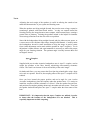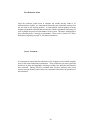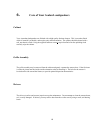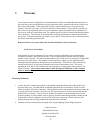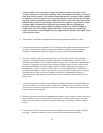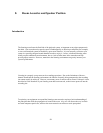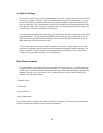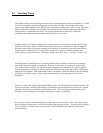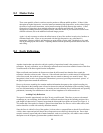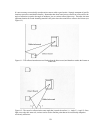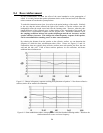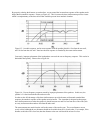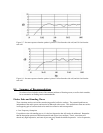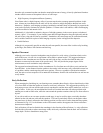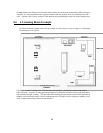
22
8.2 Flutter Echo
These same parallel, reflective surfaces can also produce a different audible problem. If there is little
absorption at higher frequencies, a musical transient containing high frequencies, such as a hand clap or
the strike of a percussion instrument, can be heard bouncing repeatedly between the surfaces. Called
flutter echo (or slap echo), these multiple reflections can obscure musical detail. The situation is
analogous to standing between two parallel mirrors, when the outline of your reflection becomes more
difficult to discern, due to the additional reflected images present.
Again, it is only necessary to reduce the reflectiveness of one of the surfaces in each pair of surfaces to
eliminate flutter echo. Since we are concerned with the high frequencies, any soft material is
appropriate. Drapery or fabric wall hangings are quite effective on the walls. Bookshelves also work
well by breaking up the flat surfaces. Carpeting should eliminate potential problems between the floor
and ceiling.
8.3 Early Reflections
Another situation that can reduce the subjective quality of reproduced sound is the presence of early
reflections. By early reflections, we are referring to reflected sound waves that reach the listener within I0 to
20 milliseconds of the direct signal from the loudspeaker.
When a reflected sound reaches the listener more than 40 milliseconds later than the direct sound, the
reflection is heard as a discrete echo. However, if the reflected sound arrives within around 20 milliseconds
of the direct sound, the ear/brain system integrates the two sounds so that only one sound is heard. This
integration is done in such a way that spatial information is preserved, providing an acoustical “picture” of
the physical space that created the reflections.
However, the source recording also contains ambient information that portrays the original recording site.
Early reflections in the listening room will tend to obscure the ambient information in the recording, leading
to a loss of dimensionality or spaciousness. Secondary arrivals within the first 10 milliseconds are especially
problematic, becoming less troublesome as the arrival time lengthens to 20 milliseconds or so.
Avoiding Early Reflections
The speed of sound is approximately one foot (30 cm) per millisecond. Therefore, to preserve the natural
soundstage on your recordings, there should be no reflected sounds arriving at the listening position with a
path length less than ten feet (3 meters) longer than the direct path from speaker to listener (see Figure 8. 1).
This means that if the speaker or listener is placed closer than about five feet to a wall or other surface, that
surface should be covered with sonically absorbent material.
Since the floor is within five feet of the speaker, it is best to have a carpeted floor to absorb floor reflections.
A thick, dense carpet and pad will absorb lower frequencies more effectively than a thin one. Due to their
complex structure, carpets and pads of natural materials, such as wool and jute, will exhibit a more uniform
absorption over the frequency spectrum than synthetic materials will.



